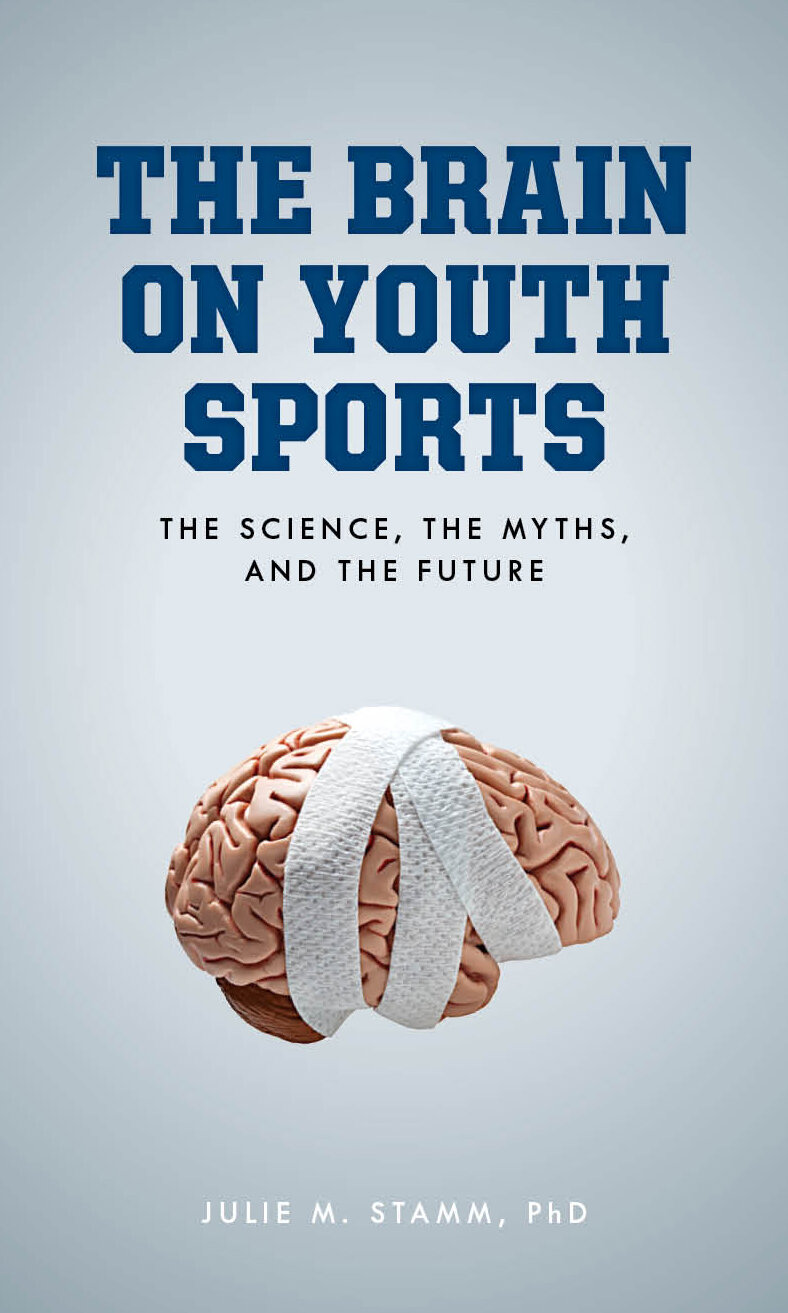Now Available in Paperback!
Awards & Honors
An Outstanding Academic Title of 2022
Choice MagazineChoice Pick Review of the Week
Choice MagazineAcademic Best Seller in Medicine
Library Journal
Madison Magazine
Bostonia Magazine
“They’re just little kids, they don’t hit that hard or that much.” “Girls soccer is the most dangerous sport.” “Chronic Traumatic Encephalopathy only happens to former NFL players.” “Youth sports are safer than ever.” These are all myths propagated with the goal of maintaining the status quo in youth sports, which can subject young, rapidly maturing brains to hundreds of impacts each season. It’s not all about concussions. Those repetitive impacts that happen on every play in football or with every header in soccer can damage the brain, too. The consequences can be even worse for a child’s developing brain.
In this book, I dissect the issue of repetitive brain trauma in youth sports and their health consequences, explaining the science behind concussions, CTE, and subconcussive impacts written in an easy-to-understand approach, so you can be a well-informed consumer and decision maker. I counter the myths, bad arguments, and propaganda surrounding the repetitive brain trauma in the youth sports industry. This book also provides guidance for those deciding whether or not their child should play sports with a high risk of repetitive brain trauma as well as for those hoping to make youth sports truly as safe as possible for young athletes.
As a former three-sport athlete and avid sports fan I understand the many wonderful benefits that come from playing youth sports and believes all children should have the opportunity to play sports without the risk of long-term consequences. No athlete has to sustain hundreds of impacts and repetitive brain trauma in order to gain the benefits of sports.
Reviews for “The Brain on Youth Sports”
“Stamm’s book is a must read for all parents contemplating allowing their young child to play a collision sport as it will allow for an informed, highly-educated decision.”
“The Brain on Youth Sports is a beautifully written book about the important issue of brain injuries in youth tackle football, soccer, and other contact and collision sports. This book is an easy read, providing a balanced summary about what is known — and what is not yet known — about the science of concussions, the much-more-common (and important!) repetitive subconcussive hits, and the long-term neurological consequences of repetitive blows to the head in youth sports. She tells it like it is. There is no agenda or bias, just clearly written and easily understood descriptions of the latest research, providing the reader with concise summaries that are important and meaningful to parents and pediatricians, alike. As a parent of kids who played football and soccer, and as a clinical neuroscientist who studies the degenerative brain disease, chronic traumatic encephalopathy (CTE) and other brain problems associated with repetitive head impact exposure from football, boxing, and other sports, I can sincerely state that this is the best book on this topic to date. I highly recommend it!”
“Clearheaded and productive conversation on brain injury from football is rare. Dr. Stamm has been an athlete, an athletic trainer, and a researcher. Her comprehensive experience provides an invaluable perspective. The Brain on Youth Sports is a gift to anyone aiming to gain an objective understanding of brain injury from football and other contact sports.”
“We say we would do anything to protect our children, yet each year millions of parents enroll their children in dangerous sports that may damage their developing brain. Dr. Julie Stamm has written the most up to date guide to the complex science of concussions and repetitive brain trauma in sports. Whether you are a parent choosing the appropriate sport for your child or a coach wrestling with how to keep your athletes safe, the reader will walk away educated and inspired to do the right thing – and not hit children in the head.”

